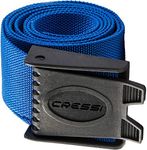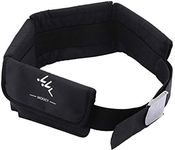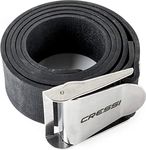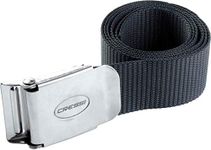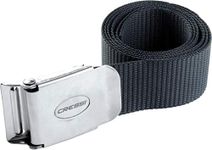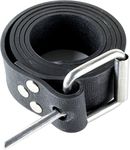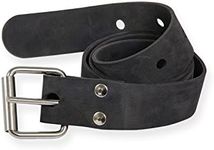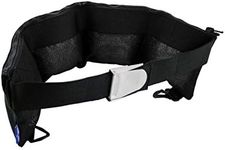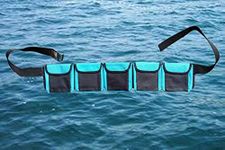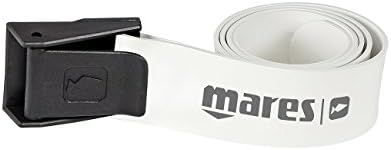Buying Guide for the Best Weight Belt For Diving
Choosing the right weight belt for diving is crucial for ensuring a safe and enjoyable underwater experience. A weight belt helps divers achieve neutral buoyancy, allowing them to control their depth and movement more effectively. When selecting a weight belt, it's important to consider several key specifications to find the best fit for your diving needs.MaterialThe material of the weight belt is important because it affects durability, comfort, and ease of use. Common materials include nylon, rubber, and webbing. Nylon belts are lightweight and durable, making them a popular choice for recreational divers. Rubber belts offer more stretch and grip, which can be beneficial in colder water or for freediving. Webbing belts are strong and versatile, suitable for various diving conditions. Choose a material that matches your diving environment and personal comfort preferences.
Buckle TypeThe buckle type on a weight belt is crucial for security and ease of release. Common buckle types include quick-release buckles, traditional metal buckles, and plastic buckles. Quick-release buckles are designed for easy and fast removal in emergencies, making them a preferred choice for safety-conscious divers. Traditional metal buckles are very durable and reliable but may be harder to release quickly. Plastic buckles are lightweight and corrosion-resistant but may not be as durable as metal ones. Consider your diving conditions and safety needs when choosing a buckle type.
Weight CapacityWeight capacity refers to the maximum amount of weight the belt can hold. This is important because it determines how much additional weight you can carry to achieve neutral buoyancy. Weight belts typically come in different capacities, ranging from a few pounds to over 20 pounds. For recreational diving, a belt with a capacity of 10-15 pounds is usually sufficient. For technical diving or diving in cold water with thick wetsuits, you may need a higher capacity belt. Assess your buoyancy needs based on your body weight, diving suit, and equipment to choose the right capacity.
AdjustabilityAdjustability is important for ensuring a comfortable and secure fit. An adjustable weight belt allows you to customize the fit to your body size and shape, which is essential for maintaining stability and comfort underwater. Look for belts with adjustable straps or those that can be easily resized. This feature is particularly useful if you plan to share the belt with other divers or if your body size changes over time. Ensure the belt can be adjusted to fit snugly around your waist without slipping.
Weight TypeWeight type refers to the kind of weights used with the belt, such as solid lead weights, soft weights, or integrated weights. Solid lead weights are traditional and provide a compact and dense option for adding weight. Soft weights are filled with lead shot and offer more flexibility and comfort, as they conform to your body shape. Integrated weights are built into the belt and provide a streamlined profile, reducing drag. Choose the weight type that best suits your comfort level and diving style.
